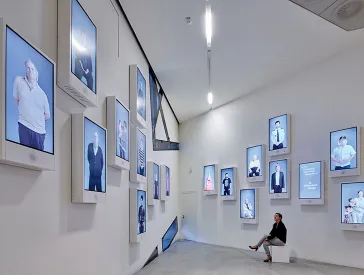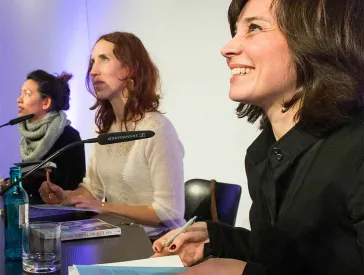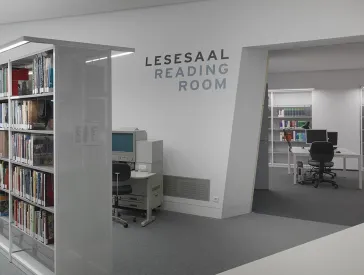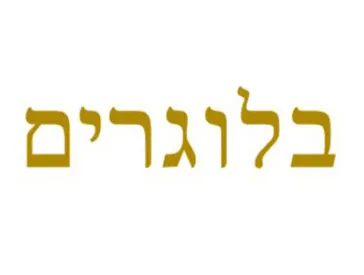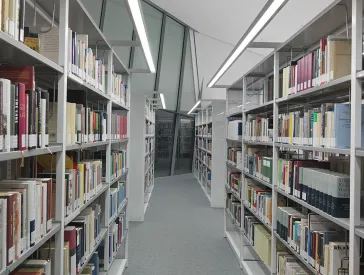Searching for the New Germans
A Visit to the Academy’s Reading Room
Why do we keep books like Muslime im säkularen Rechtsstaat (Muslims in Secular Rule of Law), Diaspora Identities, or z.B. 650 Jahre Rixdorf (E.g. 650 Years of Rixdorf) at the Jewish Museum? Answering this question is the task of the Academy program on migration and diversity. How to find these books, however, falls to the library.
Imagine that you want to learn about social structures, clubs, and immigrant biographies in Berlin, particularly in Kreuzberg, to which you yourself moved from Hesse two years ago. After visiting the museum one fine Sunday afternoon, you take a look at the new Academy, where, you heard, a friend of yours recently attended an event about the ‘new Germans.’ The Academy is closed on the weekend, but a museum host informs you that it has a library. You return on Monday and ask in the reading room about Turks in Kreuzberg. The librarian would love just to tell you, “second shelf on the left, all the way to the back – what you’re looking for is right there.”
Unfortunately, it’s not quite that simple.
Open stacks area of the library in the Academy of the Jewish Museum; Jewish Museum Berlin, photo Jens Ziehe
We have, in fact, expanded the classification system in our open stacks on the topic of “Migration and Diversity.” In contrast to how we classify Jewish history, we’ve chosen to forego regional and historical distinctions. Rather, we have tried to render different aspects of debates over the transformation from homogeneous nation states into immigration societies visible: from politics and law, religion, and minorities to education, racism, and discrimination. After all, along with the parallels between diaspora identities, there are also significant differences: while German-Jewish history goes back a good two thousand years in places such as Cologne, Frankfurt, Altona, and Berlin, Germany as a country of immigrants dates to a more recent time. In addition to this consideration, we wanted to put terms like “citizenship” and keywords like “parallel society” into an international perspective right from the start.
But back to you. You don’t follow the librarian’s advice to search for “Berlin” in the online catalog. Instead you go straight to the shelf with the new classifications for “Migration and Diversity.” There, you happen upon E.g. 650 Years of Rixdorf under the heading “Literature, Art, and Culture.” You start planning your next weekend outing, but it’s almost 7 p.m. now and the librarian is urging your departure. In the meantime you’ve flipped through the pages of the catalog Berlin – Istanbul, glanced at the study Muslims in Berlin, and are just noticing the book Wir neuen Deutschen (We New Germans) among several other auto-/biographies – for which “German History” would perhaps have been a more obvious category, but still all too easy to miss. On your way home through Oranienplatz, you remember the tents that were here until recently. Refugees, the right of residency, asylum. There must be something at the Jewish Museum about that too…
To finish, here’s a tip: Generation “Kosher Light”, p. 232 ff. You won’t find the book, by the way, under “Migration and diversity” but rather “Present age”, in the “Jewish history in Germany” section. A Russian Jewish perspective on diversity in Kreuzberg.
Bernhard Jensen (Library)
Citation recommendation:
Bernhard Jensen (2014), Searching for the New Germans. A Visit to the Academy’s Reading Room.
URL: www.jmberlin.de/en/node/6465
